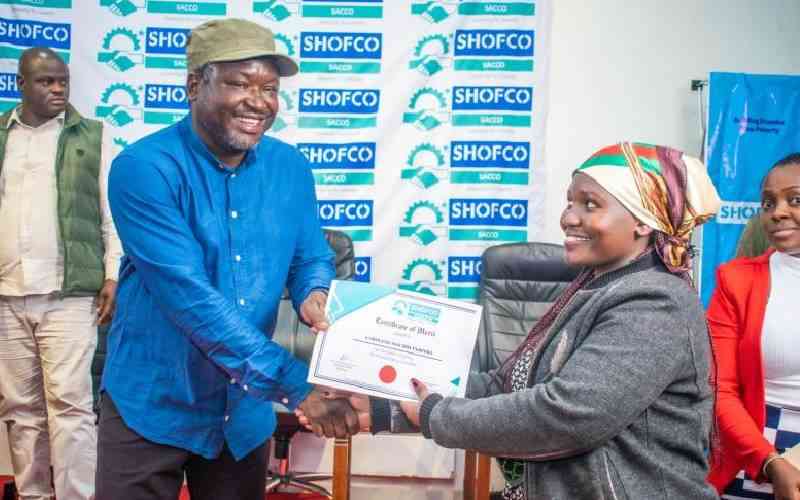Suzie Wokabi is a global trailblazer and founder of SuzieBeauty, Kenya’s first beauty brand. An International Relations degree holder, she worked in New York’s fashion and beauty industries from 2001 until 2007 when she returned to Nairobi to work on the bespoke cosmetics for the African woman. Though the brand was created in 2009, it was officially launched in December 2011.
Four years later, the firm she built from scratch was acquired by Flame Tree, a group with diverse business interests in several African countries. Suzie shares her lessons on the acquisition and how budding entrepreneurs can create brands that attract investors.
Learn the secrets of building a sustainable business
While loving your brand and the business will keep you going on a daily basis, aim to understand every aspect of the business right from the beginning. If you know your craft well, you will even view competition not as a deterrent, but something you need to become better. As you start, leave your comfort zone and get your hands dirty in all areas of your business.
I once tried acting as the finance person, which, honestly, I was not good at. I was the delivery person, the deal maker, the product developer, the human resource person, the marketer (including social media), and the face of the company – everything! Of course, I later aimed at putting the right people as we build structures. Still, this experience helped me know what I was good at, what it meant to run a business and being an entrepreneur.
Initial challenges prepare you for future expansion
We were ambitious to launch Kenya’s first local beauty brand and as expected, our initial challenges began with fundraising. My husband and co-founder had to foot a lot of the initial startup costs as far as research and development as well as manufacturing were concerned.
We knew early on we would need a good chunk of money to manufacture and launch the products into the local market. This involved a lot of fund raising and pitches to investors. The challenges may not have been pleasant but were part of the learning curve.
Your vision, your currency
I actually started SuzieBeauty in 2009 but launched the products at the end of 2011. My vision was very clear – to create and launch an affordable beauty line with international quality but that catered for the African woman.
Whichever direction the business took, that vision was the guiding principle. Thus, any twists and turns, mergers or acquisitions that the business takes must be only to improve or expand your original vision.
Be clear on the benefits of business acquisition
When our business was acquired in 2016, we were at the point where we needed a truly strategic partner to catapult the brand to the next level. We spoke at length for many months with Heril Bangera, founder and chief executive of Flame Tree Group before we finally signed the deal. Acquisition was vital for the brand to continue operating in the right direction. Remember the vision?
In addition, having others in the business helps you know your real value. For example, I finally got to actually do my proper job and even managed put my real title in the contract – Chief Creative Officer and Brand Ambassador! My daily life is a lot easier now as I get to do what I enjoy and know best in the brand.
Stay informed. Subscribe to our newsletter
Negotiate the best deal for your employees
I lost a few employees within the first year who could not acclimatise to the new situation and business culture. However, an acquisition is a two-way street and fortunately, myself and most of my team came on board. I think I was quite protective of my staff and held on to as many as possible.
There is nothing wrong in thinking of the welfare of your key team members during such circumstances. Four and a half years into the acquisition, I’m very happy with my team. It is lean and we can manage the brand nicely.
Don’t fear losing control after the acquisition
Personally, I never cared for business control. I started SuzieBeauty to create a product for all beautiful African women. I was trying to fill a gap in the local market after working in the US beauty scene for years. The local cosmetics market was in such a sad state of affairs. To me, that was my bottom line, not holding on to the company.
In any case, running the business and having the CEO title and a creative to boot was never a happy place. Even though an acquisition wasn’t actually the plan that early (four years into the retail market), I wasn’t too opposed to it. What was important to me was that I was still being a major part of the brand. These were all part of the negotiations.
Learn from mistakes other investors made in the past
Making investment mistakes during critical moments is the name of the game, and yes, I have made my share of mistakes in the past. We were just not aligned with certain investors and signed up too quickly just because we needed to get the business going. In terms of navigating the mistakes, it just took lots of conversations and big girl decisions to keep the brand alive.
Fortunately, though, I was the final decision maker back then. I have had the best gut instinct where SuzieBeauty was concerned. Again, it goes back to your vision, what you stand for and where you want your business to be.
Grow a business that will interest investors
The key is to know the ‘ins and outs’ of your business. You should be prepared to answer all questions relating to your craft on a whim. In addition, be investor friendly.
Outside of all the fluff of branding, or how beautiful the product or idea may be, in the end, it will be numbers that will matter to the investor. They can listen to your good personal story and brand history, but it’s a game of numbers…and more numbers.
Create a checklist for a viable investor
First, you may go by your gut instincts. Hopefully some have sharper instincts than mine were in the early days. But more important is an investor with the same alignment as yours – in values, business and brand understanding, and expectations. That must be clearly defined by all parties involved.
Want to reinvest profits back into the business? Watch the market
Reinvesting should be dictated by how well the business is doing and your interest in it. Aim to understand the market better every day and analyse why one product is doing better than another. In Kenya, for example, we have a very intricate market that is tricky to comprehend. Understanding it is a daily job and head scratcher. It may require you keep shifting gears.
Welcome any changes and get things right even if it means adjusting your reinvestment models. A perfect example is the Covid-19 world we are living in now, where there are no profits. Now, it’s about versatility and seeing what will work best to keep the brand going. It might mean investing more for greater online presence.
 The Standard Group Plc is a
multi-media organization with investments in media platforms spanning newspaper
print operations, television, radio broadcasting, digital and online services. The
Standard Group is recognized as a leading multi-media house in Kenya with a key
influence in matters of national and international interest.
The Standard Group Plc is a
multi-media organization with investments in media platforms spanning newspaper
print operations, television, radio broadcasting, digital and online services. The
Standard Group is recognized as a leading multi-media house in Kenya with a key
influence in matters of national and international interest.
 The Standard Group Plc is a
multi-media organization with investments in media platforms spanning newspaper
print operations, television, radio broadcasting, digital and online services. The
Standard Group is recognized as a leading multi-media house in Kenya with a key
influence in matters of national and international interest.
The Standard Group Plc is a
multi-media organization with investments in media platforms spanning newspaper
print operations, television, radio broadcasting, digital and online services. The
Standard Group is recognized as a leading multi-media house in Kenya with a key
influence in matters of national and international interest.








